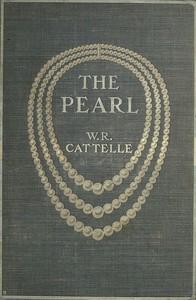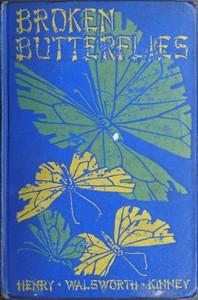Read this ebook for free! No credit card needed, absolutely nothing to pay.
Words: 58102 in 24 pages
This is an ebook sharing website. You can read the uploaded ebooks for free here. No credit cards needed, nothing to pay. If you want to own a digital copy of the ebook, or want to read offline with your favorite ebook-reader, then you can choose to buy and download the ebook.
for pearls of rare size and beauty. Great leaders of men vied with each other in the effort to add to their collections. It is said that Julius Caesar's chief incentive for pushing his conquests into the west so far, was his desire to obtain the pearls to be found in the streams of the British Isles. The Emperor Caligula decked his favorite horse with a necklace of pearls. Pliny says of Lollia Paulina, Caligula's wife, that he had seen her so bedecked with pearls and precious stones that "she glittered and shone like the sun as she went." Clodius, the glutton, claiming for them a very delicate flavor, placed one by the plate of each guest at a great banquet to be mixed with the wine. This same profligate, either setting the example or emulating Cleopatra, swallowed in a cup of wine one worth eight thousand pounds that he might have the pleasure of consuming so much value at once.
If in the intrigues so common then, a woman's influence was required, pearls were given her. To convey an indirect bribe to a man of high station a pearl of great price was presented to a member of his family. Women wore them while they slept that they might possess them in their dreams; they hung them in loose clusters suspended from the ears, that the tinkling might remind them of the beauty they could not see, and to attract the admiration and envy of others. These were called "crotalia," meaning "rattles." Young men of fortune in Athens and Rome followed the Persian fashion of wearing one in the right ear, hung as a clapper in a small bell of metal. So strong and general did the desire to own them become that Caesar forbade unmarried women, and women under a certain rank, to wear them.
Perhaps never in the history of jewels has the vogue of one so nearly approached a frenzy as that of the pearl in Rome during her days of extreme power and grandeur. The high esteem in which it was held there is reflected in the Scriptures. The Saviour used it in His parables as a symbol. The gates of the Holy City, as the prophet John saw it in his vision, were pearls. From that time until now, writers have used pearls to symbolize purity, innocence and the highest type of feminine beauty. To say that a woman's teeth were like pearls has been the poets' favorite adulation, and the discovery and sale of great pearls has been deemed of sufficient importance by travellers and historians to record them.
Much of the literature of pearls is founded on the statements of Pliny regarding them: many, if not most, of the absurd beliefs as to their origin and superstitions concerning them, may be traced to the same source; and though these ancient errors have been repeatedly exposed by later scientists and naturalists the poetic absurdities of the industrious Roman compiler, gathered from contemporaneous writers and tradition are current to-day, for they appeal more to the child-like human love of the indefinite wonderful than the exact statements of research, though the latter are really more marvellous.
Though jewels are regarded by many as baubles and of little account among the great commercial interests of the world, they have been an important factor in shaping the destiny of nations, changing the borders of great countries and thereby aiding the progress of civilization. As pearls helped materially to bring Rome to the British Isles and the colonists of Spain to South America, so it is quite probable that the pearls of Egypt had their influence in drawing the Macedonians to that country, to be followed by the Romans when the latter sought to overturn the Macedonian empire. Beyond this, their influence among those who held the reins in the government of empires, or those having power with them that did, cannot be estimated.
Passing beyond the days of Greece and Rome to more remote times and countries, we come to the realms of conjecture. We know that pearls were known and used as jewels in Egypt under the Ptolemies. Chares of Mytilene mentioned that they were worn by women of the East about the neck and arms and even upon the feet. It is said there is a word for them in a Chinese dictionary four thousand years old.
There is evidence that they had been used in India and the far East long before the West had knowledge of those countries, but we have nothing recorded which penetrates the past beyond three to four hundred years B.C., for there is not as much mention made of them in ancient writings familiar to the West as of other precious stones. Nevertheless the pearl is among the most ancient in the nomenclature of jewels because when it did come to be written of only the one thing could be meant. Nature produces nothing similar with which it could be confounded, whereas it is not certain that the diamond, ruby, and other stones as we know them, were intended when the names by which we designate them were used. Such indiscriminate use of names has been made by translators that it is difficult to determine what the stones really were about which ancient authors wrote. The names of those in the Jewish High Priest's breastplate, given in our English version of the Old Testament, undoubtedly misrepresent the stones actually used, and the only thing authorities agree upon regarding the names is that they are incorrect.
After the same manner the last sentence, "For the price of wisdom is above rubies" is rendered by the great oriental scholar Bochart, "The extraction of wisdom is greater than the extraction of pearls," and other authorities agree with him.
Although there is evidence that many if not all the precious stones of to-day were known and used by the ancients, it is equally evident that they were much confounded and very roughly classified by general appearance only, and as various peoples gave them different names, all records of them are as misleading as the recorders were ignorant of their differential qualities. Even with the rapid increase of knowledge in the last few centuries, not until quite lately has science drawn the lines clearly between stones similar in appearance though essentially different and furnished means for the detection of those inherent differences. It is impossible therefore to learn by ancient writings how long any of the precious stones have been known and used as jewels, for we do not know positively what the stone was by the name given in old writings or by the translator of them. The pearl only has not been thus generally confounded with other gems.
Once only are pearls mentioned in the Old Testament--the instance quoted from the book of Job. It would seem therefore, that although used as jewels, they were not regarded as of great value in the East prior to about 400 years B.C., at which time the last of the sacred Jewish books is supposed to have been written. True, royalty wore them in Egypt and the people of Persia and Arabia used them very generally for personal adornment; but they were abundant in those countries and there had been no demand for them beyond their borders, therefore, though beautiful, they were common and not appreciated fully. Upon the influx of foreign invaders from shores that yielded no such gems their status changed rapidly. The greedy avidity with which Greeks and Romans seized them, and the demand for them from the West which came later, gave these natives of pearl-producing shores a new idea of the value of their pearls and the trinkets became gems.
It was a condition similar to that which arose nineteen hundred years later when the Spaniards invaded America. At their first coming the natives gave them freely large quantities of pearls and gleefully traded magnificent gems for broken pieces of gaudily painted and varnished porcelain. As one to-day might take a new acquaintance for a day's fishing to a well-stocked stream, so the Indians took the Spaniards to the pearl banks to show them how they obtained their pearls. With pleasure and probably some amusement, they watched the eagerness with which the strangers sought the pearls, and doubtless wondered at the gratification displayed when they found any.
The Egyptians and Asiatics being more highly civilized undoubtedly valued their pearls more than the South American Indians did, but naturally they would not appreciate them so highly as they did after foreign desire had depleted their hoards and established a constant demand for them, greater than the yield of their fisheries.
Free books android app tbrJar TBR JAR Read Free books online gutenberg
More posts by @FreeBooks

: Andrée and His Balloon by Lachambre Henri Machuron Alexis - Balloon ascensions; North Pole; Andrée Salomon August 1854-1897










